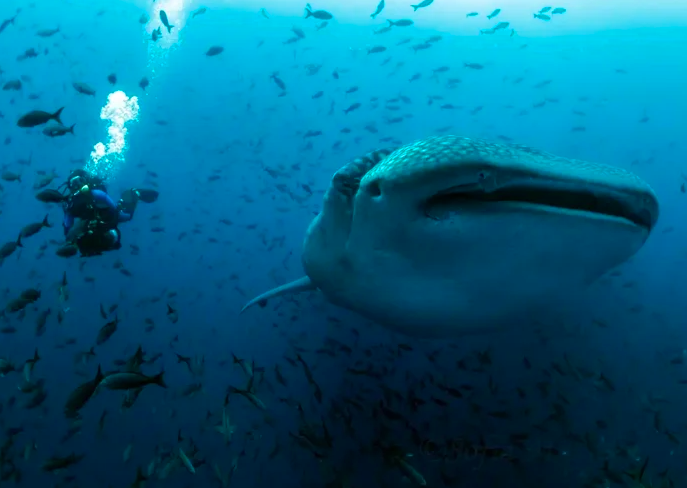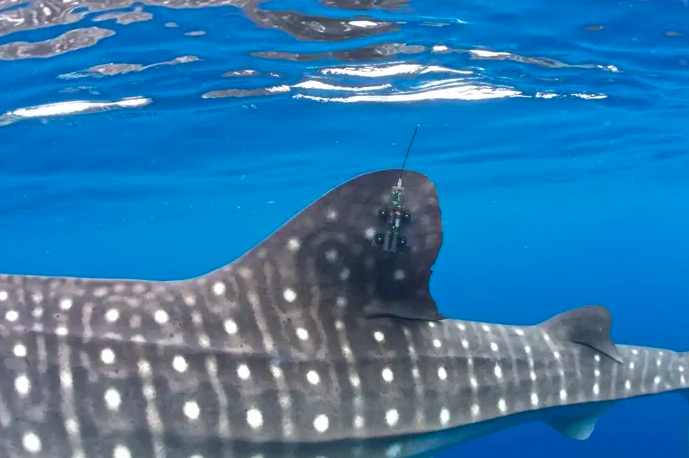Ship strikes blamed for falling populations of endangered species

Deadly ship strikes on whale sharks could be responsible for a fall in the population of the endangered species, says a new study by Freya Womersley (based at the UK’s Marine Biological Association in Plymouth). An international team of over 60 scientists from 18 countries was brought together for the study, in which a global shark movement project satellite tracked almost 350 whale sharks by fitting them with electronic tags, mapping their positions across all major oceans in unprecedented detail.
Along with international colleagues, Womersley says the movements of whale sharks often overlap with those of large ships in both location and time, which could explain why numbers of the world’s largest fish are falling.
Movements of 348 sharks and ships bigger than 300 tons were analysed. The data revealed that sharks routinely cross busy shipping routes, spend almost half of their time in surface waters at similar depths as vessels, and use space that overlaps with ships.

“We found that a staggering 92 percent of the horizontal space occupied by whale sharks and nearly 50 percent of their depth layers overlapped with the activities of these fleets,” says Womersley (writing in The Conversation with David Sims).
“We then developed state-of-the-art models to identify the collision risk within these overlapping areas and found that the Gulf of Mexico, Arabian Gulf, and Red Sea posed the highest risk to whale sharks.
“These regions are home to some of the world’s busiest ports and sea passages, and because our estimated levels of risk correlated with known fatal collisions here, they appear to be some of the most dangerous places in the world for whale sharks to inhabit.
“Within high-risk areas, whale sharks regularly crossed vessel paths and passed close to ships that were traveling about 10 times faster than they were swimming.
“This gave the sharks very little time to respond to an oncoming ship, and these close-range encounters may be happening more often than we have the capacity to monitor, potentially ending in fatal strikes.
“Alarmingly, whale shark tag transmissions ended more often in busy shipping lanes than we expected. Even after accounting for the random technical failures of transmitters, we found 24 percent of tags stopped transmitting in busy shipping lanes, most likely due to whale sharks being lethally struck and sinking to the ocean floor.
“We may even have recorded whale sharks dying due to collisions. Some of the tags record depth as well as location and showed sharks moving into shipping lanes but then sinking slowly to the seafloor hundreds of meters below – the smoking gun for a lethal ship strike.”
The collision risk estimates corresponded with regional reports of shark deaths from ship strikes, and the last locations of likely dead sharks carrying tracking tags that ceased transmitting coincided with busy routes.
The findings indicate that undetected or unrecorded ship strikes may be responsible for a substantial proportion of whale shark deaths, potentially explaining population decline despite protection from international trade and low fishing-induced mortality.
The authors say the findings highlight the need for collision monitoring, vessel speed regulation, and localised conservation measures to reduce the threat of lethal ship strikes to surface-dwelling marine life.
Main image courtesy of Sofia Green.










